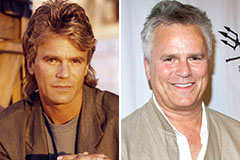For the fascinating and frequently uncertain entire world of professional wrestling, championship belts hold a importance that transcends plain embellishment. They are the utmost icons of accomplishment, hard work, and prominence within the made even circle. Among the most respected and traditionally rich titles in the industry are the WWF Champion Belts, a family tree that goes back to the extremely foundation of what is currently referred to as copyright. These belts have not just represented the peak of battling expertise but have actually also advanced in design and significance together with the promo itself, coming to be renowned artifacts cherished by followers worldwide.
The trip of the WWF Championship began in 1963 when the Globe Wide Wrestling Federation (WWWF), the forerunner to the WWF and at some point copyright, was developed. Following a disagreement with the National Wrestling Partnership (NWA), Northeast marketers established their own banner and identified Buddy Rogers as their inaugural WWWF Whole world Heavyweight Champion on April 25, 1963. Surprisingly, some accounts recommend that Rogers was granted the WWWF title belt, which was an old United States title he currently had, as a placeholder until a new style could be created.
Throughout the WWWF age (1963-1979), the championship belt undertook a number of models, commonly accompanying the periods of its most prominent owners. Bruno Sammartino, the epic "Living Tale," held the title for an astonishing combined total of over 4,000 days throughout two reigns. Throughout his time, various designs were seen, consisting of one formed like the contiguous United States, highlighting the local origins of the promo. Later on, a much more typical layout including two wrestlers grappling over an eagle ended up being identified with Sammartino's 2nd power and the champs that followed him, such as " Super Star" Billy Graham and Bob Backlund.
The year 1979 noted a significant change as the WWWF formally ended up being the World Fumbling Federation (WWF). This rebranding would at some point lead to adjustments in the championship's name and appearance. In the very early 1980s, as the WWF began its ascent towards ending up being a worldwide sensation, a larger, environment-friendly natural leather belt with huge gold plates was presented. This design featured a wrestler holding a championship with the globe behind him, emphatically declaring the holder as the " Entire world Champ." Significantly, the side plates of this version provided the lineage of previous champions, a practice that acknowledged the title's rich history. This renowned belt was held by numbers like Bob Backlund, The Iron Sheik, and, most notoriously, Hunk Hogan, who carried it during the "Hulkamania" period, a period of unprecedented mainstream success for the WWF.
The mid to late 1980s saw the intro of what lots of take into consideration one of the most cherished styles in battling history: the "Winged Eagle" champion. Debuting in early 1988, with Hunk Hogan as the first owner, this layout featured a marvelous eagle with outstretched wings as the focal point, flanked by smaller sized side plates. The "Winged Eagle" belt ended up being a symbol of quality throughout the late 1980s "Rock 'n' Wrestling" era and well right into the 1990s " Brand-new Generation" age. Famous champions such as Randy Savage, The Ultimate Warrior, Bret " Gunman" Hart, and Shawn Michaels all proudly held this variation of the title. The "Winged Eagle" even transitioned into the very early years of the "Attitude Age," with " Rock Cold" Steve Austin being the last full-time champion to wear it.
The " Mindset Era," which blew up in appeal in the late 1990s, brought with it a extra hostile and edgy visual, mirrored in the WWF Champion design. In late 1998, the "Big Eagle" belt was introduced. This design featured a bigger central plate with a prominent WWF "scratch" logo, signifying the firm's contemporary identity. While maintaining a feeling of prestige, the " Large Eagle" design lined up with the defiant spirit of the era and was held by fabulous numbers like "Stone Cold" Steve Austin, The Rock, and Mick Foley.
As the calendar turned to the new millennium, the WWF undertook an additional change, ending up being Whole world Fumbling Enjoyment (copyright) in 2002. This age likewise saw the marriage of the WWF Champion with the copyright Champion ( obtained after copyright's purchase of Whole world Championship Fumbling). The "Undisputed" championship was stood for by both the " Large Eagle" and the copyright's "Big Gold Belt" being held all at once. This unification was brief, as the re-established copyright divided its lineup right into two brands, Raw and copyright, bring about the creation of a new Globe Heavyweight Championship for the Raw brand name, while the initial title ended up being special to copyright and was relabelled the copyright Champion.
Since then, the copyright Championship has actually continued to evolve in name and style. In the mid-2000s, John Cena presented the "Spinner" belt, a debatable but indisputably eye-catching layout featuring a big copyright logo that can rotate. This reflected Cena's identity and interest a more youthful target market. Succeeding styles have aimed to mix modern visual appeals with a sense of background and status.
In recent times, specifically because April 2022, the copyright Championship has been defended along with the copyright Universal Championship as the Indisputable copyright Universal Championship, though both titles kept their individual family trees. At first stood for by both belts, a solitary, unified layout eventually arised, embellished with black rubies and the holder's personalized side plates. Since April 13, 2025, Cody Rhodes holds the Undisputed copyright Championship, having actually merged it after defeating Roman Reigns at copyright XL in 2024. Following his success, copyright officially relabelled the linked title to the Undisputed copyright Championship.
The WWF Championship Belts, throughout their different versions, have acted as more than just prizes. They represent traditions, ages, and the numerous tales told within the wrestling ring. Each design is fundamentally linked to the champions wwf belts who held them and the periods they defined. From the traditional magnificence of the "Winged Eagle" to the vibrant declaration of the "Spinner" and the present unified design, these belts are tangible items of battling history, instantaneously well-known signs of greatness in the whole world of expert fumbling. Their evolution mirrors the advancement of the firm itself, frequently adjusting to the moments while forever recognizing the abundant tradition upon which they were built.
 Amanda Bynes Then & Now!
Amanda Bynes Then & Now! Richard "Little Hercules" Sandrak Then & Now!
Richard "Little Hercules" Sandrak Then & Now! Phoebe Cates Then & Now!
Phoebe Cates Then & Now! Richard Dean Anderson Then & Now!
Richard Dean Anderson Then & Now! Mike Smith Then & Now!
Mike Smith Then & Now!